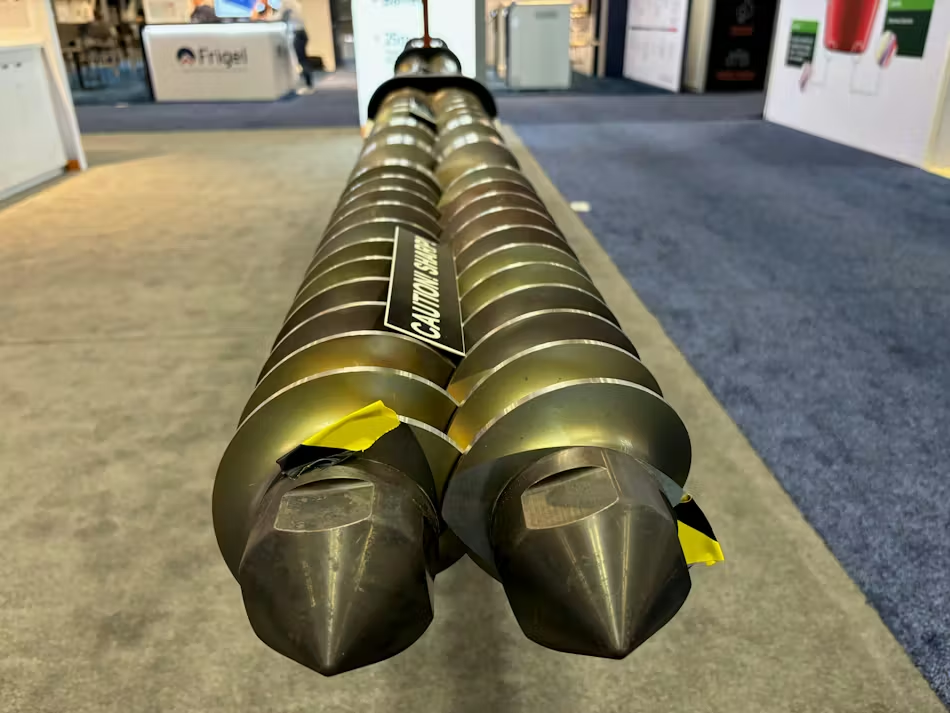Introduction
The Machinery OEMs industry is on the verge of change as we approach 2024. Economic factors such as global market trends, government policies, and technological advancements will have a significant impact on how things shape up. It is crucial for Machinery OEMs to understand these factors in order to succeed in an economy that may be getting better.
In this guide, we will look at how different economic factors affect Machinery OEMs. We will also provide practical strategies to help you navigate challenges and take advantage of opportunities during times of economic change.
Imagine a situation where your business can use the latest technologies and confidently enter new markets. This guide will give you the knowledge and tools you need to make this happen.
Explore important topics like energy efficiency and automation to stay ahead in this ever-changing industry.
Not only are these topics essential for staying competitive, but they are also closely linked to environmental concerns that can greatly impact your business. For instance, have you considered the impact of plastic waste on Earth? Understanding this issue can help you make informed decisions about sustainable practices within your industry.
Furthermore, it’s crucial to be aware of recent developments such as Paris banning single-use plastics for the Summer Olympics. This highlights the growing global movement towards reducing plastic consumption and promoting eco-friendly alternatives. By aligning your business with these sustainable practices, you not only contribute to a healthier planet but also attract environmentally-conscious customers.
Join us as we explore the details of the economic landscape, providing valuable insights specifically for Machinery OEMs in 2024. By incorporating strategies that prioritize sustainability, energy efficiency, and automation, you’ll be well-equipped to thrive in this evolving industry.
Understanding the Economic Landscape for Machinery OEMs
Economic factors play a crucial role in shaping the success and sustainability of Machinery OEMs. These factors can be divided into three main areas: global market trends, government policies, and technological advancements.
Global Market Trends
Global market trends significantly impact the demand and supply dynamics for machinery OEMs. Key trends include:
- Economic Growth Rates: Fluctuations in economic growth rates across different regions affect capital investment in machinery. For instance, robust growth in emerging markets often translates to increased demand for industrial machinery.
- Trade Policies: Tariffs, trade agreements, and import-export regulations directly influence operational costs and market access. Recent trade tensions have caused uncertainties, prompting companies to reassess their supply chains.
- Consumer Demand: Shifts in consumer preferences towards sustainable products drive innovation in machinery design. This trend is particularly evident in industries like plastics, where there’s a growing emphasis on recycling and eco-friendly materials.
Government Policies
Government policies can either support or hinder the growth of machinery OEMs. Several critical policy areas include:
- Subsidies and Tax Incentives: Governments often provide financial incentives to encourage investment in advanced manufacturing technologies. These incentives can reduce the cost burden on OEMs and stimulate innovation.
- Regulatory Compliance: Stringent regulations regarding emissions, safety standards, and energy efficiency necessitate continuous upgrades in machinery design. Compliance with these regulations ensures market access but increases R&D expenditures.
- Infrastructure Development: Investment in infrastructure projects by governments creates opportunities for machinery OEMs. Projects such as road construction, energy plants, and urban development require specialized machinery.
Technological Advancements
Technological advancements are a mixed blessing for Machinery OEMs, offering both opportunities and challenges:
- Industry 4.0 Technologies: The adoption of IoT, AI, and robotics enhances productivity and operational efficiency. Machinery equipped with smart sensors can monitor performance in real-time, reducing downtime and maintenance costs.
- Sustainable Innovation: OEMs are increasingly focusing on developing sustainable solutions to meet environmental regulations and consumer demand. Innovations such as energy-efficient motors and recyclable materials are gaining traction.
- Digital Twins: The use of digital twins allows manufacturers to simulate production processes virtually. This technology aids in optimizing design and improving product quality without physical prototypes.
Challenges Posed by Economic Factors
Each economic factor presents unique challenges that have shaped the industry in recent years:
- Market Volatility:
- Economic recessions lead to reduced capital investments by businesses.
- Currency fluctuations impact the cost of raw materials and finished goods.
- Policy Uncertainty:
- Changes in trade policies create supply chain disruptions.
- Regulatory changes necessitate frequent updates to comply with new standards.
- Technological Disruption:
- Rapid technological advancements require continuous investment in R&D.
- The need for skilled labor to operate advanced machinery creates a talent gap.
Recent Industry Impacts
The past few years have seen significant impacts due to these economic factors:
- The COVID-19 pandemic disrupted global supply chains, causing delays and increased costs for raw materials.
- Inflationary pressures have led to higher input costs,
Assessing the Current State of the Plastics Industry: A Case Study
Recent Performance and Growth Potential
The plastics industry is crucial for machinery manufacturers because it is used in many different industries. In recent years, there has been strong growth in this industry due to new materials and processes. One area of growth is sustainable and recyclable plastics, which are in high demand. This presents an opportunity for machinery manufacturers to create innovative solutions that meet market needs.
Participation of Processing Machinery Manufacturers in NPE2024
NPE2024, organized by the Plastics Industry Association (PLASTICS), is a significant event for processing machinery manufacturers. It showcases the latest solutions in the industry. Here are two key areas of focus at NPE2024:
- Injection Molding Machines: These machines are used to make complex plastic parts with precision. Manufacturers are highlighting improvements in speed, energy efficiency, and automation.
- Extrusion Technology: Innovations in this area aim to increase productivity and product quality while reducing waste. Advanced extrusion technology is essential for applications like packaging and automotive parts.
The participation of machinery manufacturers at NPE2024 shows their commitment to innovation and meeting customer demands.
Impact of NPE2020 Cancellation and Recovery Strategies
The cancellation of NPE2020 due to the COVID-19 pandemic was a significant setback for machinery manufacturers. It resulted in delays in launching new products and fewer opportunities for networking. However, companies have implemented strategies to recover from this setback and prepare for NPE2024:
- Virtual Engagement: During the pandemic, many companies used online platforms to showcase their products and interact with customers.
- Localized Manufacturing: To reduce risks in the future, some machinery manufacturers have moved their production facilities closer to their main markets. This helps them rely less on global supply chains.
- Exploring New Markets: Machinery manufacturers are also looking to enter emerging markets as a strategic move. This helps them diversify their sources of revenue and reduce vulnerability to economic changes in specific regions.
These strategies not only address the challenges faced in the past but also position machinery manufacturers well for future growth.
Linking Opportunities
For readers who want to learn more about related topics, here are some resources to explore:
- Plastic Pollution – Information on environmental impacts and solutions offered by JianTai Plastic Machinery Ltd.
- Cost Estimates – Detailed cost analysis provided by JianTai Plastic Machinery Ltd.
- Earn Money with Plastic Recycling Machine – Discover the financial benefits of owning a plastic recycling machine.
- The Role of Plastic Extruders – Explore how advanced plastic extruders enhance manufacturing efficiency.
These resources provide additional insights that complement the discussion on the current state of the plastics industry.
Understanding these trends in the plastics industry gives machinery manufacturers practical knowledge on how to navigate economic challenges and capitalize on emerging opportunities.
Strategies for Economic Resilience and Growth
Machinery OEMs face numerous economic challenges that require strategic planning and adaptability. To ensure long-term sustainability in the manufacturing industry, capital expenditures and investment spending must be carefully allocated. Below are practical strategies that Machinery OEMs can employ to navigate these economic challenges.
1. Diversifying Market Presence
Expanding into new industries and geographic regions can substantially mitigate risks. By not relying solely on a single market segment or location, Machinery OEMs can buffer against economic downturns in any one area.
New Industries
Exploring sectors outside of traditional markets can open up new revenue streams. For example, entering the renewable energy or medical device manufacturing sectors can be lucrative.
Geographic Expansion
Establishing a presence in emerging markets like Southeast Asia or Latin America diversifies geographical risk. This ensures that market volatility in one region does not cripple the entire operation.
2. Embracing Technological Advancements
Leveraging Industry 4.0 technologies is crucial for enhancing productivity and driving product innovation.
Automation
Investing in automated machinery reduces labor costs and increases precision. This can lead to higher-quality products and lower operational costs.
Data Analytics
Utilizing data analytics helps optimize manufacturing processes by identifying inefficiencies and predicting maintenance needs.
IoT Integration
Internet of Things (IoT) devices offer real-time monitoring and control over machinery, further boosting efficiency.
For instance, advancements in pelletizer technology have significantly improved the production processes in plastics manufacturing, making operations more efficient and cost-effective, particularly in the production of plastic pellets.
3. Strengthening Supplier Relationships
Collaborating closely with key suppliers is essential to managing costs and ensuring the availability of critical components.
Long-Term Contracts
Entering long-term contracts with suppliers can lock in prices and secure supply chains.
Joint Ventures
Forming joint ventures with suppliers can lead to co-development of innovative solutions that benefit both parties.
Transparency
Sharing forecasts and production plans with suppliers fosters transparency, which helps them plan better and meet your needs efficiently.
Understanding the factors influencing cost in supplier relationships allows Machinery OEMs to make informed decisions that optimize their supply chain strategies.
4. Investing in R&D
Staying ahead of market trends through continuous research and development efforts is vital for long-term growth.
Innovation Hubs
Setting up dedicated R&D centers accelerates innovation by focusing resources on developing new technologies.
Collaborative Projects
Partnering with universities or other research institutions can provide access to cutting-edge research without bearing all the costs.
Customer Feedback
Incorporating customer feedback into the R&D process ensures that new developments meet market needs effectively.
Investing in sustainable practices is another critical aspect of R&D. Companies focusing on sustainability are likely to benefit from increased consumer demand for eco-friendly products, regulatory incentives, and long-term cost savings.
By implementing these strategies, Machinery OEMs can navigate economic challenges effectively while positioning themselves for sustained growth in a brightening economy. Staying adaptable and forward-thinking enables companies to seize opportunities as they arise, ensuring
Seizing Opportunities in the Global Market for Machinery
The Importance of a Global Mindset
Machinery OEMs must adopt a global mindset to stay competitive. This approach involves understanding diverse markets, recognizing regional demands, and tailoring products accordingly. A global perspective allows you to:
- Identify Emerging Markets: Regions like Asia-Pacific and Latin America present significant opportunities for machinery OEMs. These markets are rapidly industrializing and have increasing demands for advanced machinery.
- Adapt to Local Preferences: Customizing machinery to meet local regulatory requirements and consumer preferences can lead to higher adoption rates.
- Mitigate Risks: Spreading operations across multiple regions reduces dependency on a single market, cushioning against economic downturns in any one area.
Expanding Presence in International Markets
To expand internationally, consider these strategies:
- Market Research: Conduct thorough research to identify potential markets. Analyze factors such as economic stability, industrial growth, and competition.
- Local Partnerships: Collaborate with local businesses to gain insights into the market and establish a foothold more quickly.
- Trade Shows and Exhibitions: Participate in international trade shows like NPE2024, which offers exposure to global buyers and an opportunity to showcase innovative solutions.
Establishing Local Production Facilities
Setting up local production facilities is a strategic move that offers several benefits:
- Reduced Logistics Costs: Manufacturing closer to your target market significantly cuts down transportation costs and delivery times.
- Compliance with Local Regulations: Producing locally ensures adherence to regional laws and standards, simplifying the approval process.
- Enhanced Customer Support: Proximity allows for better after-sales service and customer support, fostering stronger client relationships.
Strategies for Mitigating Challenges
While establishing local production facilities provides numerous advantages, it also comes with challenges that need careful planning:
- Understanding Local Regulations: Ensure compliance with all local regulations related to labor, environmental standards, and business operations.
- Supply Chain Management: Develop a robust supply chain strategy that includes reliable local suppliers for critical components.
- Cultural Adaptation: Understand and respect cultural differences that may influence business practices. This builds trust and smoothens operations.
Real-world Examples
Many companies have successfully expanded their global footprint by establishing production facilities in key regions:
- JianTai Plastic Machinery Ltd. has leveraged its expertise in types of plastic recycling machines to set up production units closer to high-demand markets. This not only reduces shipping times but also aligns with their commitment to the circular economy.
- Companies focusing on process control have found that local facilities help them better understand regional manufacturing nuances, allowing for more precise machine customization.
Adopting these strategies enables machinery OEMs not just to survive but thrive in a globally competitive environment.
Conclusion
The machinery OEMs have proven their ability to adapt and thrive in challenging economic times. They have done this by being open to change and embracing new ideas, which gives them an advantage as the economy improves.
There are several key strategies that machinery OEMs can use to position themselves for future success:
- Diversifying market presence: Expanding into new industries and geographic regions helps to spread risks and tap into different customer segments.
- Embracing technological advancements: Adopting Industry 4.0 technologies can lead to improved productivity, efficiency, and innovation.
- Strengthening supplier relationships: Building strong partnerships with suppliers is crucial for managing costs and ensuring a stable supply of essential components.
- Investing in research and development (R&D): Continuous innovation through R&D activities allows machinery OEMs to stay ahead of market trends and offer differentiated products.
It is important for machinery OEMs to actively implement these strategies rather than just considering them. Taking action is what will make a difference in their business performance.
In addition to the above strategies, it is also important for machinery OEMs to stay informed about the latest economic trends. This knowledge can help them identify new opportunities and make informed decisions about their business direction.
For instance, as the article on plastic recycling explains, exploring sustainable solutions such as converting plastic waste into pellets for reuse can not only address environmental concerns but also create additional revenue streams.
Moreover, considering the growing emphasis on sustainability, exploring recycling machinery options can be beneficial in terms of both cost-efficiency and environmental impact.
Specifically, a PP Plastic Recycling Machine Line can be a valuable investment for machinery OEMs. This line mainly consists of a plastic extruder, water tank, pelletizer, and plastic storage hopper. Additional components like blow-drying machines can be added based on specific requirements.
By integrating such sustainable practices and technologies, machinery OEMs can not only contribute to a greener future but also gain a competitive edge in the market.
Machinery OEMs have shown an incredible capacity for resilience and growth. By implementing the discussed strategies, including exploring sustainable options like plastic recycling, they can navigate economic adversity and seize opportunities in a potentially brightening economy.
FAQs (Frequently Asked Questions)
What is the relevance of this guide for Machinery OEMs in 2024?
This guide explores the impact of economic factors on Machinery OEMs and provides strategies for navigating a potentially brightening economy. It is relevant for Machinery OEMs seeking to understand the economic landscape and adapt their strategies for long-term sustainability.
What are the various economic factors that influence the success of Machinery OEMs?
The economic factors include global market trends, government policies, and technological advancements. Each factor poses specific challenges that have affected the industry in recent years.
How has the recent performance of the plastics industry impacted Machinery OEMs?
The recent performance of the plastics industry has highlighted its growth potential and emerging opportunities for Machinery OEMs. The cancellation of NPE2020 due to the COVID-19 pandemic has also impacted machinery manufacturers and their strategies for recovery at NPE2024.
What are some practical strategies that Machinery OEMs can employ to navigate economic challenges?
Machinery OEMs can employ strategies such as diversifying market presence, embracing technological advancements, strengthening supplier relationships, and investing in research and development to ensure long-term sustainability.
Why is it important for Machinery OEMs to have a global mindset?
Having a global mindset is important for Machinery OEMs to expand their presence in international markets. It also allows them to establish local production facilities in key market regions, with strategies for mitigating associated challenges.
How can Machinery OEMs leverage a potentially brightening economy for future success?
Machinery OEMs can leverage a potentially brightening economy by implementing the strategies discussed in this guide and staying updated on the latest economic trends affecting the industry. This will enable them to adapt and thrive in changing economic conditions.



